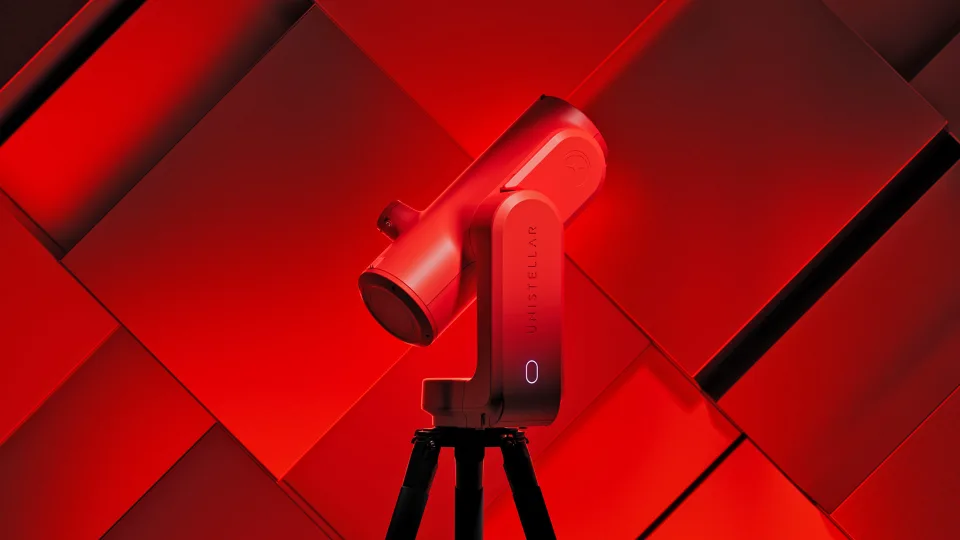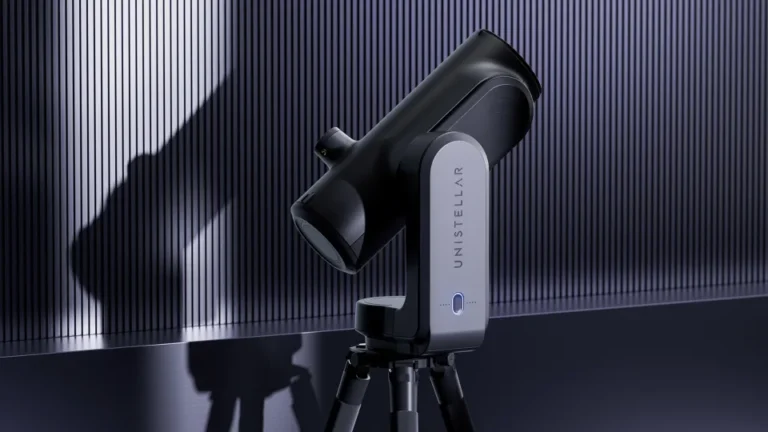New “multi-depth” focusing technology and Nikon optics are features of the Odyssey and Odyssey Pro models.
At the Consumer Electronics Show 2024 (CES 2024), the French telescope manufacturer Unistellar introduced two new models that are infused with technology and promise to eliminate the tedious aspects of backyard astronomy. New technology enables the new Odyssey and Odyssey Pro smart telescopes to focus on objects that are close by, such as Jupiter, as well as those that are further away, such as stars or nebulae. An improved smartphone software that assists you in aligning and focusing the telescope while automatically finding subjects to picture is also included in these telescopes. Additionally, they include new Nikon optics.
The eVscope 2 and the eQuinox 2 are the smart telescopes that are currently in use by Unistellar. Their primary purpose is to capture images of distant galaxies, stars, clusters, and other similar objects. They are also capable of imaging planets, but focusing can be difficult. The Odyssey and Odyssey Pro, on the other hand, make use of a technology that the firm refers to as Multi-Depth technology. This technology allows the camera to focus equally effectively on both close and far objects, allowing you to transition from viewing the Moon to a distant nebula in an instant.
It accomplishes this by employing the entire sensor resolution in order to capture images of objects that are relatively small yet nevertheless bright. For things that are dim and larger, it merges four pixels into one, similar to the way that many smartphone cameras do, in order to increase the light gathering capability. However, this comes at the expense of some detail. During the Consumer Electronics Show (CES), the business informed us that it also “stacks multiple images of the same spot to render a clean output.”
Because of its high-sensitivity sensor and intelligent picture processing, they are even able to function in places with a lot of light pollution. “With the Odyssey, Unistellar is offering a new generation of smart telescopes that are both ultra-powerful and capable of instantly transforming your stargazing evenings into adventures across the cosmos with family or friends, even in the middle of the city,” said Laurent Marfisi, co-founder and chief executive officer
The Android and iOS app has also received a significant update. By identifying clusters of stars and determining the precise location of a target, it continues to perform the same function as before, which is to automatically direct the telescope in the direction of the desired target at the appropriate time. On the other hand, it is now able to make recommendations for what to look at on a specific evening and provide further context regarding the body in question.

Additionally, the business claims that these telescopes are the first of their kind to not require manual adjustments, which is something that can be challenging for amateur astronomers. Both telescopes include new optical tubes that are made with Nikon optics. This is combined with a brand new autofocus technology, which is quite similar to the one that is found on digital cameras, in order to produce photographs that are consistently sharp.
However, the new telescopes have smaller mirrors than the eVscope 2, which has a focal length of 450mm, and they are more affordable than previous models. The mirrors on the new telescopes measure 320mm. One of the most notable distinctions between the two models is that the Odyssey Pro has a slightly higher resolution (4.1 megapixels as opposed to 3.4 megapixels), in addition to having an eyepiece that was manufactured by Nikon. As of right now, the Odyssey can be purchased for $2,499, while the Odyssey Pro can be purchased for $3,999. The company also offers a limited-edition Odyssey Pro Red Edition, which can be purchased for $4,499 (see the image above).

